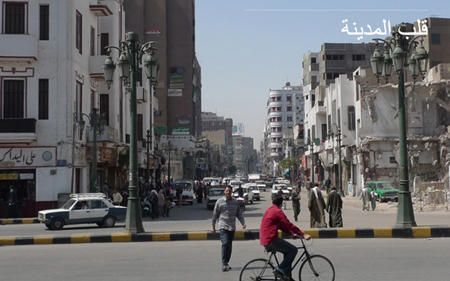City Core

Students:Tommaso Arnaboldi, Emanuel Biland
The research topic «City core» covers the territory of the historical core of the city of Assiut, the largest town in the Upper Egypt with some 500’000 inhabitants and located 230 kilometres to the South of Cairo. Like El-Minya or Sohag, Assiut is a regional centre in the Nile valley providing the surrounding territory with services (for instance, the University of Assiut is third largest in Egypt and it is a place where 70’000 students receive education). Assiut also has a large Coptic Christian community and it is the region’s most important agricultural centre, dealing in cotton and grain.
The cities in the valley have been founded directly along the Nile on a topographical elevation, and their histories go back to the times of ancient Egypt. Assiut itself has been founded in pharaonic times, and was historically an important destination for travellers, traders and camel caravans arriving through the desert from Darfur in Sudan. Until 1850, the largest slave market in Egypt was located in Assiut. However historic layers, whether ancient or modern, are not easily recognizable in Assiut, in a manner that they would be made visible in a European city. Assiut is less concerned with its history than with its everyday life, in which some ancient ways of trading or living can be found mixed with contemporary ones, in spontaneous and lively manner.

